7 Best Herbal Creams For Leg Pain
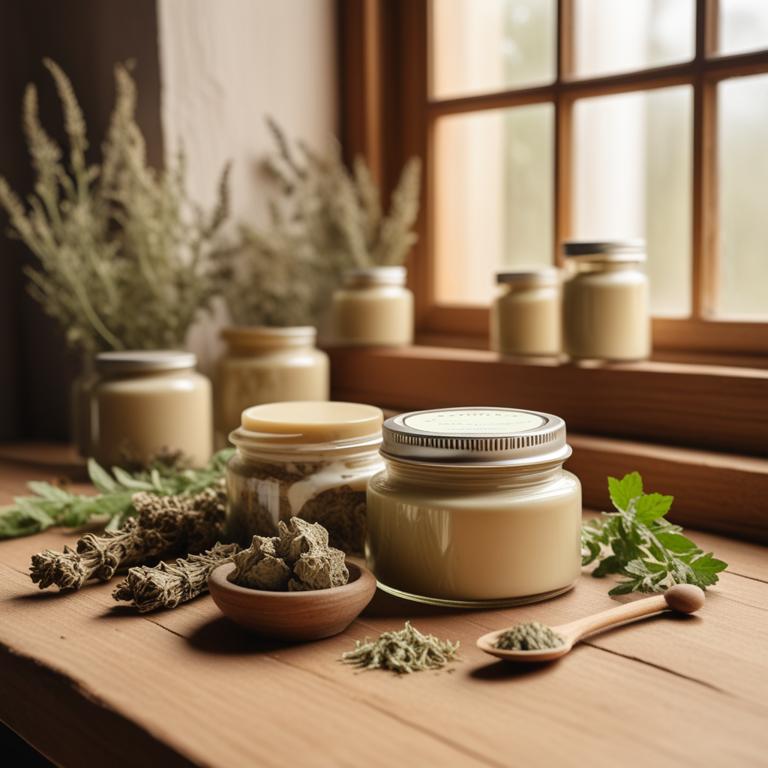
Herbal creams for leg pain are topical treatments that combine herbs and other natural ingredients to alleviate discomfort, reduce inflammation, and promote healing in the affected areas.
The benefits of using herbal creams for leg pain include reduced inflammation, improved circulation, and enhanced pain relief, making them a popular alternative to conventional treatments.
Examples of herbal creams used to treat leg pain include arnica cream, which reduces inflammation and promotes healing, capsaicin cream, which numbs the pain, and menthol cream, which cools and soothes the affected area.
Additionally, other herbal creams such as peppermint, chamomile, and calendula are also used to treat leg pain due to their anti-inflammatory and analgesic properties, as well as their ability to improve circulation and reduce muscle tension.
According to "Neurological sciences : official journal of the Italian Neurological Society and of the Italian Society of Clinical Neurophysiology", creams for leg pain containing Ajwain 10% (Trachyspermum ammi Sprague) have been shown to significantly reduce feet burning scores and symptoms of numbness, tingling, and allodynia in patients with neuropathic pain.
Below there's a list of the 7 best herbal creams for leg pain.
- 1. Arnica montana creams
- 2. Arnica chamissonis creams
- 3. Cannabis sativa creams
- 4. Boswellia serrata creams
- 5. Aloe barbadensis creams
- 6. Centella asiatica creams
- 7. Curcuma longa creams
Also you may be interested in...
TODAY'S FREE BOUNDLE
Herb Drying Checklist + Herbal Tea Shopping List + Medicinal Herbs Flashcards
Enter you best email address below to receive this bundle (3 product valued $19.95) for FREE + exclusive access to The Aphotecary Letter.
$19.95 -> $0.00
1. Arnica montana creams
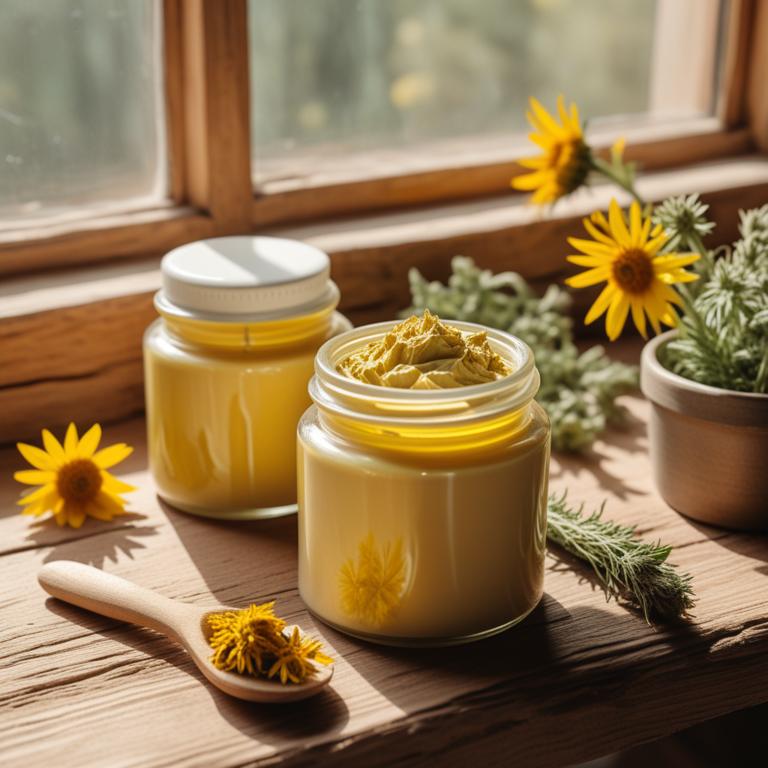
Arnica montana creams have been widely used to treat leg pain, a common ailment caused by inflammation and injury.
The anti-inflammatory properties of Arnica montana creams help to reduce swelling and pain in the affected area, providing quick relief from discomfort.
The bioactive constituents, including sesquiterpene lactones, flavonoids, and phenolic acids, present in Arnica montana creams contribute to its analgesic and anti-inflammatory effects, making it an effective treatment for leg pain.
Regular use of Arnica montana creams can provide long-term benefits, including reduced inflammation, improved circulation, and enhanced healing of tissues, ultimately leading to a faster recovery from leg pain.
2. Arnica chamissonis creams

Arnica chamissonis creams have been traditionally used to treat leg pain ailments, particularly those related to inflammation and bruising.
The herbal preparation contains bioactive constituents such as sesquiterpene lactones, flavonoids, and phenolic acids, which help to reduce inflammation and promote healing.
The anti-inflammatory and analgesic properties of Arnica chamissonis creams help to alleviate pain and discomfort in the legs, making it a popular natural remedy for conditions such as shin splints and runner's knee.
By reducing swelling and promoting tissue repair, Arnica chamissonis creams provide relief from leg pain and promote overall well-being.
3. Cannabis sativa creams
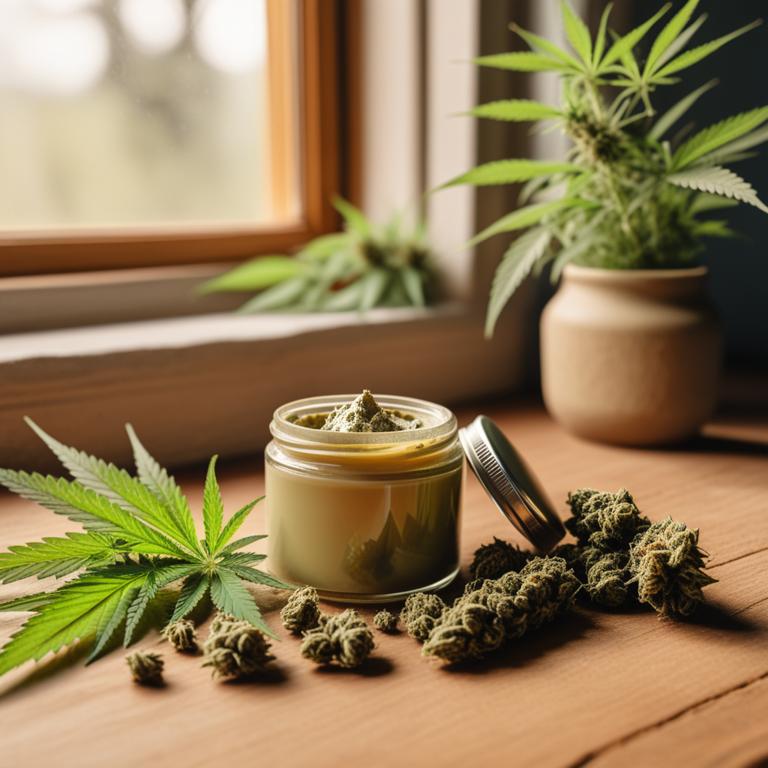
Cannabis sativa creams have been found to be effective in treating leg pain ailments, primarily due to their anti-inflammatory and analgesic properties.
These creams help to alleviate leg pain by reducing inflammation and blocking the production of pain-causing chemicals in the body, thereby providing quick relief from discomfort.
The bioactive constituents, such as cannabidiol (CBD) and tetrahydrocannabinol (THC), found in these creams are responsible for their therapeutic effects, interacting with the body's endocannabinoid system to modulate pain perception.
The benefits of using Cannabis sativa creams for treating leg pain include reduced reliance on opioids, minimal side effects, and improved overall quality of life.
Related Study
According to the "Turkish journal of pharmaceutical sciences", Cannabis sativa creams have shown potential in improving MS symptoms, including muscle spasm and neuropathic pain, which may be beneficial for individuals experiencing leg pain.
4. Boswellia serrata creams
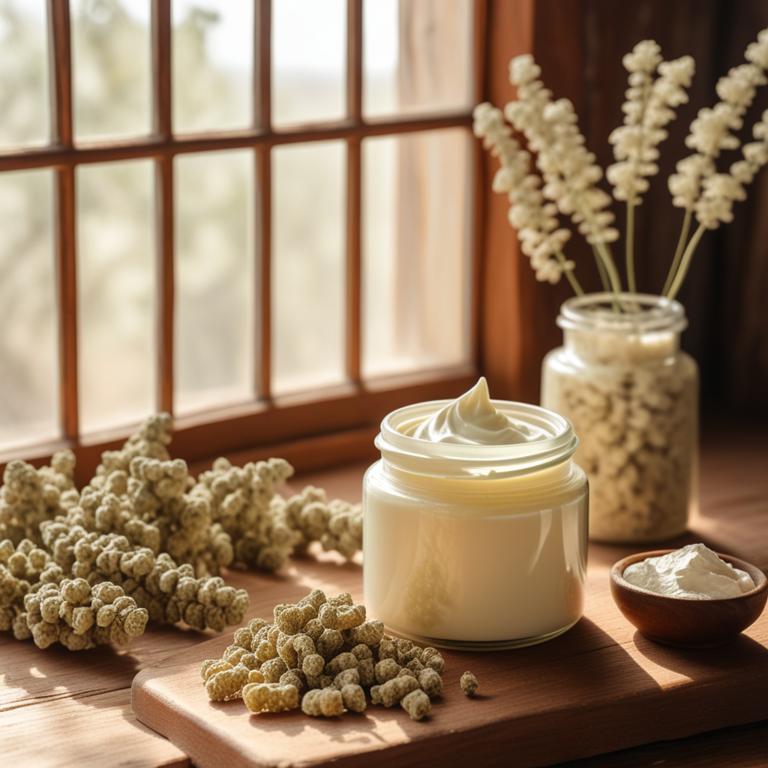
Boswellia serrata creams have been traditionally used to treat leg pain, a common symptom of various conditions including arthritis and sciatica.
The anti-inflammatory and analgesic properties of Boswellia serrata creams help to reduce pain and inflammation, thereby alleviating discomfort and improving mobility.
The bioactive constituents of Boswellia serrata, including boswellic acids, acuminatin, and 3-acetyl-11-keto-β-boswellic acid, possess potent anti-inflammatory and analgesic activities that contribute to its therapeutic effects.
The benefits of using Boswellia serrata creams for leg pain include reduced pain and inflammation, improved joint mobility, and enhanced overall quality of life.
Related Study
According to "Phytotherapy research : PTR", Boswellia serrata creams may be effective in managing leg pain, as oral Boswellia serrata was found to be more effective than both placebo and valdecoxib for improvement of pain.
5. Aloe barbadensis creams
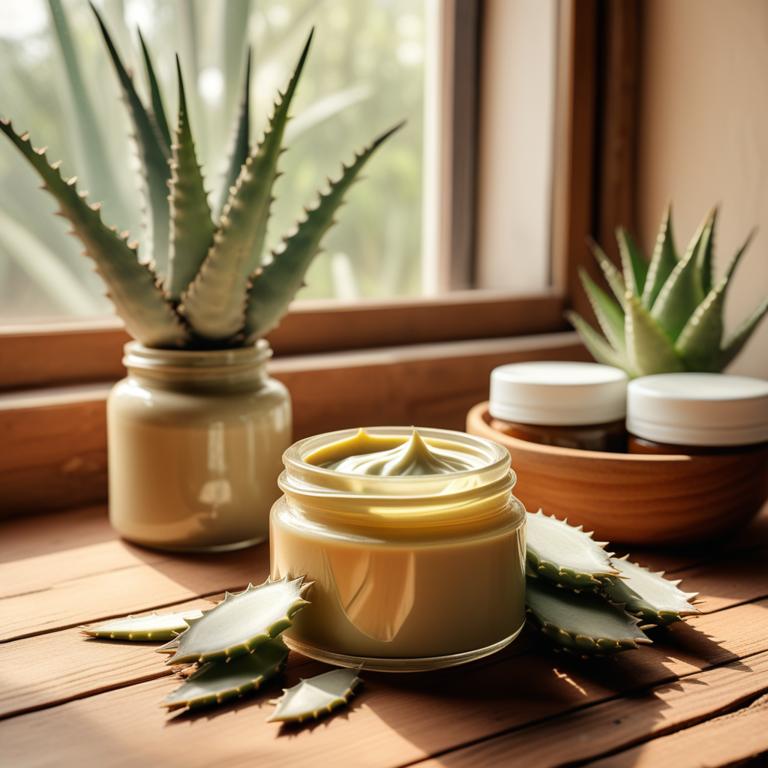
Aloe barbadensis creams are widely used to treat leg pain, particularly in cases of arthritis and muscle strain, due to their anti-inflammatory and analgesic properties.
The gel extracted from the plant contains bioactive constituents such as aloin and aloe-emodin, which help to reduce inflammation and alleviate pain by inhibiting the production of pro-inflammatory enzymes.
By applying Aloe barbadensis creams to the affected area, individuals can experience relief from pain and discomfort, promoting faster recovery and improved mobility.
The benefits of using Aloe barbadensis creams for leg pain include reduced inflammation, improved circulation, and enhanced wound healing, making it a popular natural remedy for treating this common ailment.
Related Study
According to "Journal of the American Podiatric Medical Association", Aloe barbadensis creams for leg pain may provide anti-inflammatory relief, with a 47.1% inhibition of inflammation obtained by 5% decolorized irradiated Aloe vera preparations.
6. Centella asiatica creams
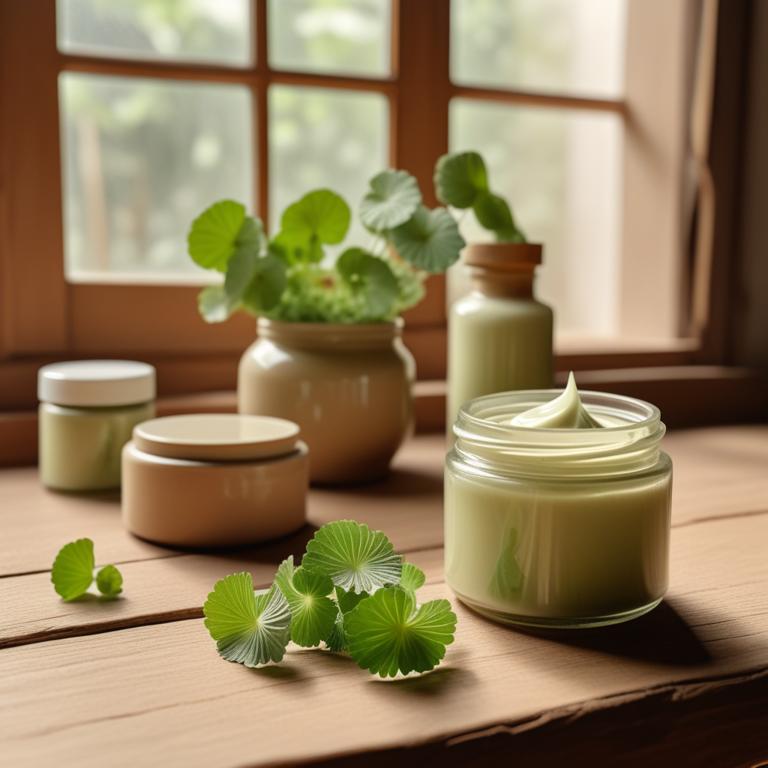
Centella asiatica creams have been traditionally used to treat leg pain ailments, such as peripheral neuropathy and varicose veins, due to their anti-inflammatory and antioxidant properties.
These creams help to treat leg pain by improving circulation, reducing inflammation, and promoting wound healing, making them an effective treatment option for various leg-related conditions.
The bioactive constituents of Centella asiatica, including asiatic acid and madecassic acid, play a crucial role in treating leg pain by reducing oxidative stress and improving the integrity of blood vessels.
The benefits of using Centella asiatica creams to treat leg pain include reduced pain and discomfort, improved circulation, and enhanced overall leg health, making them a popular herbal remedy for this ailment.
7. Curcuma longa creams
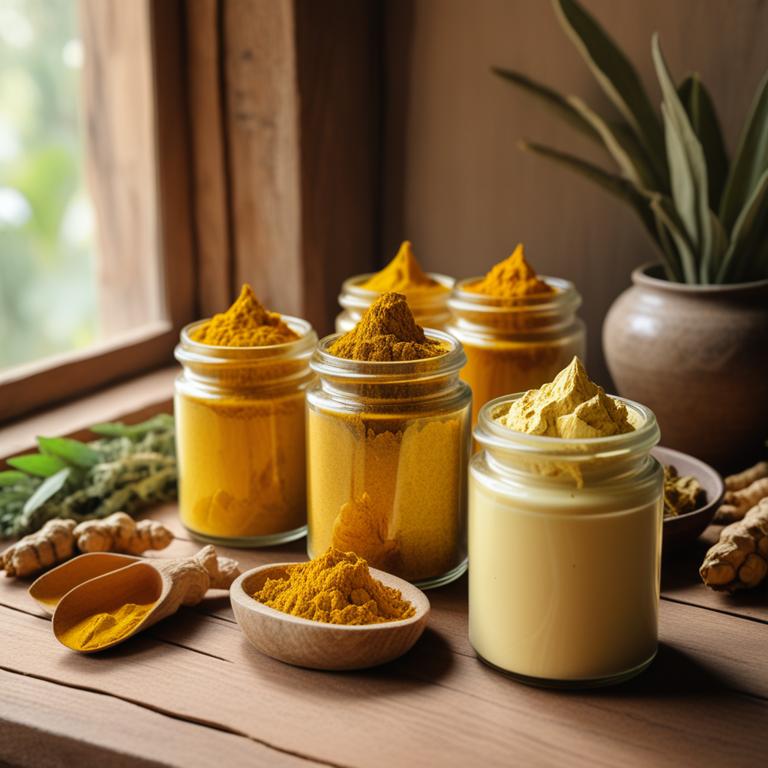
Curcuma longa creams have been traditionally used to treat leg pain, a common symptom of various ailments such as arthritis and sciatica, due to their anti-inflammatory and analgesic properties.
The bioactive constituents of Curcuma longa creams, including curcuminoids and gingerols, help to reduce inflammation and pain in the affected area.
By inhibiting the production of pro-inflammatory enzymes and cytokines, Curcuma longa creams alleviate pain and discomfort in the legs, allowing for improved mobility and reduced stiffness.
Regular use of Curcuma longa creams has been found to provide relief from chronic leg pain, promoting overall well-being and quality of life.
Related Study
According to "Iranian journal of basic medical sciences", Curcuma longa creams may have potential benefits for treating leg pain, although this specific application is not mentioned in the provided study.